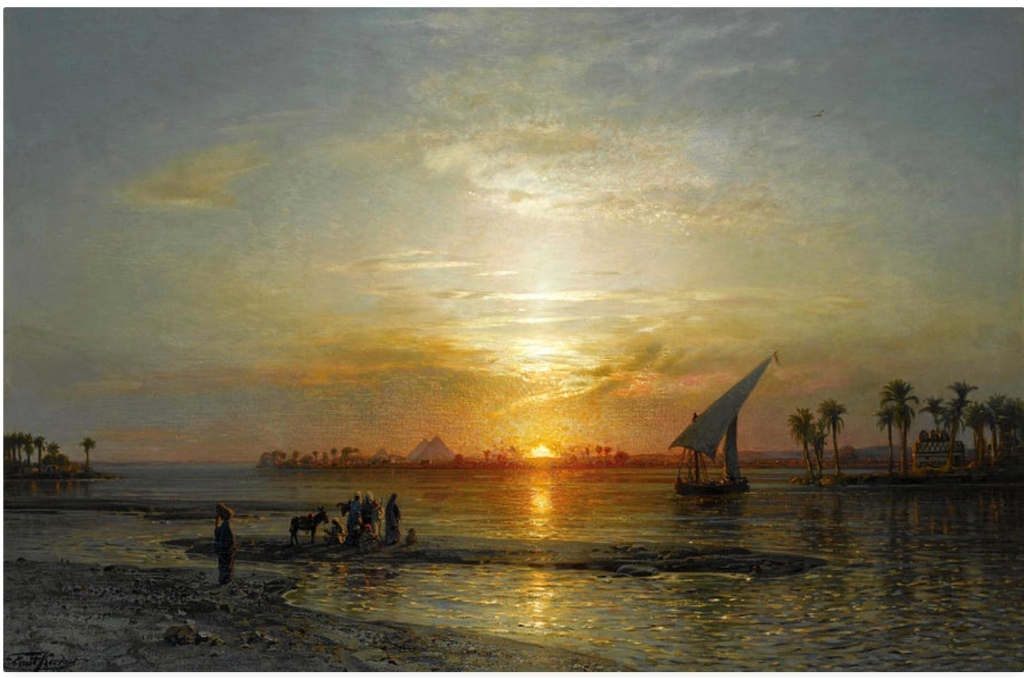
Once I had a student from Egypt who asked me for a word in English. He took an Arabic word I did not know and created a picture of it in my mind. “Mrs. Campbell,” he asked, “What is it called when it is no longer day, but not yet night?”
“Twilight,” I answered.
I was struck by the way he was able to arrange and use the words he knew to seek the word he did not– and that he was able to do it in such a poetic and imaginative way. The Latin root of imagination was clearly in play: imaginari–“to picture to oneself.”
By its very nature, imagination resists being confined by language. It is easier to say what it isn’t than what it is. Imagination is not the potter or the clay, but it’s the animating force that gives form and shape to inspiration. It is not the artist or the canvas, but it is the relationship between the two. It is not the story or the teller, but it is the dreamlike image conjured and brought to life with carefully chosen words. It is not pedagogy or practice; it is the bridge between the two. Imagination is the twilight space between the desire to know and knowledge.
Imagination can work with limitations. It understands rules, respects meaningful convention; it can thrive within parameters. It shrinks and shrivels under the inflexible command of conformity. It has to be honored. It grows with space for play and expression. It shrinks when it is trivialized and dismissed as “make-believe.”
Without imagination, our ideas calcify and begin to sort themselves into tired creeds of collective group think. Without imagination, we are unable to tell our story, or worse, we are unable to imagine a new story for ourselves and for others. Disdain and cynicism mask a lack of imagination and masquerade as sophistication.
With imagination, we integrate new ideas with old ideas that work. We begin to organize and reorganize our thoughts and narratives through the creative process. We shape and reshape elements of our lives and knowledge in new ways. We begin to adopt an attitude of simplicity, returning again and again to “beginner’s mind” to see ideas with fresh eyes. We strike word against image and then wait in the space between what we know and what what we seek to learn. We wait with reverence and patience for the blaze of insight and discovery. The possible is hope, not failure. Our work in the in-between places of “not yet” becomes art.
The artist and the intellectual are not mutually exclusive– both seek to use imagination and creativity to harmonize thought and events in new ways.
Our imagination enables us to see the universal in the particular–and then to test the particular, through theory and hypothesis, for universal truth.
No academic discipline should exclude imagination and storytelling. When we teach imagining possibilities we teach human beings to play heroic roles in their own narratives, and to identify and embrace the narratives that are not their own with heroes that do not look or think like them. Imagination plays a vital role in connection, compassion, and renewal. In her beautiful essay, When I was a Child I Read Books, Marilynne Robinson wrote: “Story is an exercise in the capacity for imaginative love, or sympathy, or identification.”
When imagination is honored, it shows up. Because imagination is born through image, it often shows up as metaphor– an image that can reveal ideas and deepen thinking. Metaphors contain insight waiting to be uncovered by language– knowledge waiting for words to catch up. Metaphors take us deeper than our words can go and invite us into a communal practice of respect for emerging words and ideas.
Our imagination works with metaphor to take us beyond the places we have known. It ferries us through the twilight spaces between places– from the desire to know more to the not yet discovered. It is a renewing and amplifying gift that makes teaching and learning an art.
Imagine

Love this piece about imagination. I really like these comparisons
“Imagination is not the potter or the clay, but it’s the animating force that gives form and shape to inspiration. It is not the artist or the canvas, but it is the relationship between the two. It is not the story or the teller, but it is the dreamlike image conjured and brought to life with carefully chosen words. It is not pedagogy or practice; it is the bridge between the two. Imagination is the twilight space between the desire to know and knowledge.”
Thanks for sharing – If you are interested there is a site called Two Writing Teachers – they do a call every Tuesday for teachers to post and share – you might find it fun to take a look. The Tuesday call is titled Slice of Life. https://twowritingteachers.org/challenges/